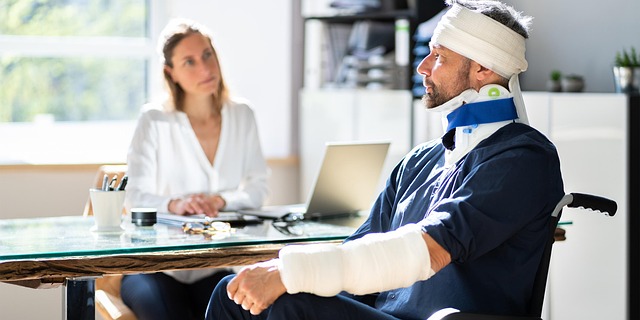Bicycle accident injuries range from soft tissue damage to severe fractures and head traumas, including concussions. Immediate medical care is vital for life stabilization and managing complex issues like whiplash. Holistic healing involves physical therapy, psychological support, legal assistance for compensation claims, and emotional support from loved ones. With dedicated rehabilitation, many victims can fully recover and return to daily routines over time.
Bicycle accidents can lead to a range of injuries, some more severe than others. Understanding common injuries and their treatment is crucial for both riders and medical professionals. This article explores the most painful bicycle accident injuries and the recovery process. From fractures and head traumas to soft tissue damage, we’ll discuss recognizing and managing trauma immediately after an accident, as well as the steps towards a successful recovery. By delving into these topics, we aim to equip cyclists with knowledge to navigate potential challenges following a bike crash.
- Common Injuries in Bicycle Accidents
- Recognizing and Treating Trauma
- The Road to Recovery After Injury
Common Injuries in Bicycle Accidents

In bicycle accidents, a variety of injuries can occur depending on the nature and severity of the impact. Common injuries include soft tissue damage such as bruises, sprains, and strains, which can range from mild to severe. Fractures are also frequent, affecting limbs, ribs, or even the skull. Head injuries, including concussions, are particularly concerning due to the risk of long-term cognitive issues. Internal organ damage and broken bones often require immediate medical attention and extensive recovery time.
Additionally, bicycle accidents can lead to more complex issues like whiplash, which affects the neck muscles and tendons, causing pain and discomfort. In severe cases, victims might face lifelong disabilities or disfigurement. It’s important for individuals involved in such accidents to seek prompt medical care and understand their rights, especially when dealing with potential liability and compensation, similar to scenarios in business litigation or employment contracts. These situations require careful navigation, especially if there are signs of caregiver abuse or negligence involved.
Recognizing and Treating Trauma

In the immediate aftermath of a bicycle accident, recognizing and addressing trauma is crucial for both physical and emotional recovery. Victims may experience a range of injuries, from broken bones to head trauma, often accompanied by severe pain and shock. The initial response should focus on seeking immediate medical attention to stabilize any life-threatening conditions. Once stabilized, comprehensive treatment plans are essential, including physical therapy for mobilizing again and psychological support to cope with the emotional toll.
A personal injury attorney can play a vital role in navigating the legal complexities following such accidents, especially when pursuing injury compensation. Understanding your rights and options is crucial, as partnership disagreements or insurance claims can add further stress during recovery. Timely action and expert guidance ensure victims receive the care and support they need to heal physically and emotionally from bicycle accident injuries.
The Road to Recovery After Injury

The road to recovery after a bicycle accident can be long and challenging, but with the right support, many injuries do heal over time. The first step is ensuring proper medical attention. A personal injury attorney specializing in bicycle accidents can help navigate the often complex process of seeking compensation for medical bills, lost wages, and pain and suffering. This legal expertise, combined with dedicated rehabilitation efforts, can significantly improve a victim’s outlook.
Recovering from bicycle accident injuries involves both physical and emotional components. Physical therapy is crucial to regain strength and mobility. Meanwhile, managing pain, whether through medication or alternative treatments, is essential to maintaining quality of life during the recovery period. As the body heals, it’s important to be patient and follow medical advice, understanding that full recovery may take months or even years for more severe injuries. This journey can also be supported by community and family, who provide emotional backing throughout the process, from initial hospitalization to eventual return to daily routines, including potentially navigating commercial disputes related to injury compensation if necessary.
Bicycle accidents can result in significant injuries, but understanding common trauma types and the recovery process is crucial for both riders and medical professionals. By recognizing symptoms early and following structured rehabilitation plans, individuals can navigate their road to recovery effectively. Prioritizing safety measures and being aware of potential bicycle accident injuries empowers cyclists to protect themselves and seek appropriate care, ensuring a smoother transition back to active living.






